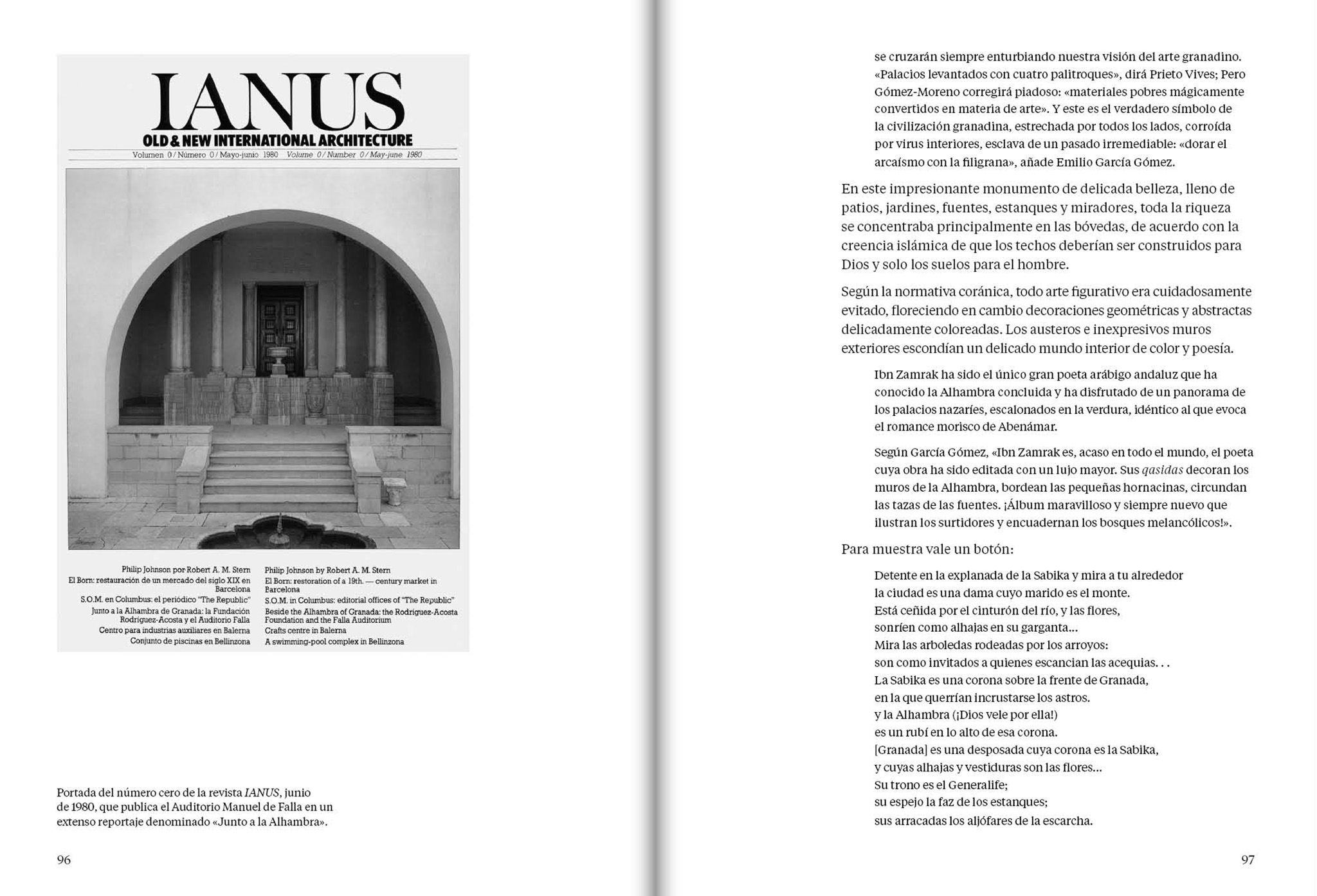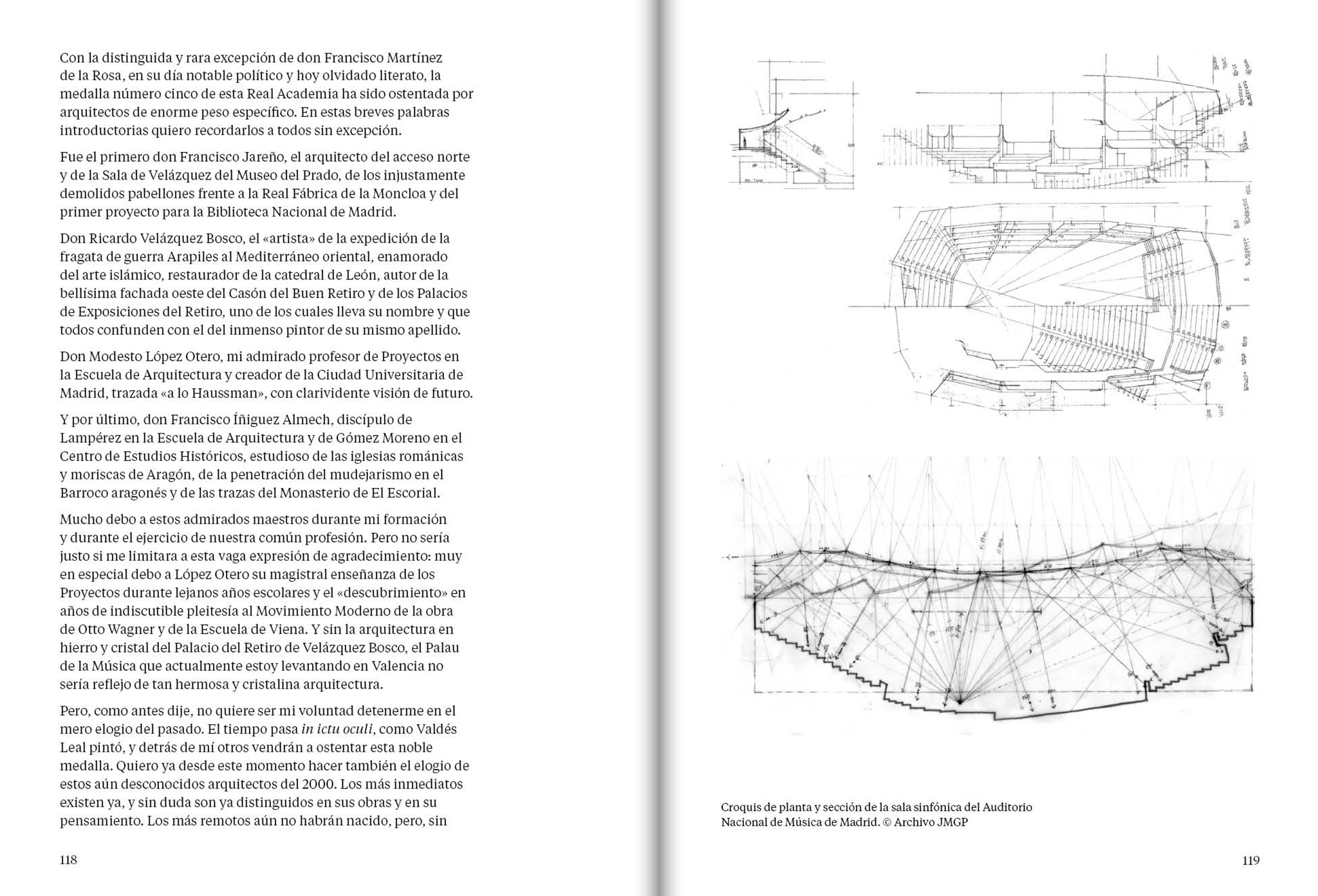The book is divided into five phases: «Rome», «Surveys», «Memories», «Three landscapes», «Music and Architecture». In "Roma", José María García de Paredes writes about his interest in the Academy of Rome, even before joining it; a chronology of activities during his two-year residency at the Academy of Fine Arts of Spain from March 1956 to 1958. In addition, he points out works carried out, such as the Spanish Pavilion at the XI Triennale in Milan, commissioned by the two scholarship holders of the Academy , which is why he exposes his concerns about how they introduced essential materials such as lime, ceramics and iron to represent Spain. From the construction of the pavilion, he achieved a series of contacts that opened doors to him in Europe, which, together with the means provided by the academy allowed him to travel, among many other cities, to West Germany, Sweden, Finland and Denmark, which he explains in greater detail.

Interior pages. Writings on architecture and architects. La cimbra 19 by José María García de Paredes.
In "Surveys" he collects a series of questions for each of the topics raised, which have as references magazine publications of the time, and gives his opinion on certain controversial topics at the time, such as satellite cities, the integration of the rest of the arts in architecture or the relationship between architect and architecture in political aspects.
In the next chapter called "Memories," he evokes a series of architects whom he admires for their works; Casto Fernández-Shaw, emphasizing his capacity for enthusiasm, invention, and non-conformity at 65 years old; Carlos Pascual de Lara, who mentions him as a religious artist for his global knowledge of the arts; Francisco Javier Sáenz de Oiza, recalling his Gold Medal for Architecture received in 1989, cites the difficulty of presenting a figure that needs no introduction and lastly, Luis Moya Blanco, identifying him as the representation of the texts of Vitruvius and Vastuvidya.

Interior pages. Writings on architecture and architects. La cimbra 19 by José María García de Paredes.
Finally, in "Music and Architecture" he relates both their definitions and with the architectural spaces that serve music and takes a walk through the architecture of music, such as "Il Vecchio Teatro", Promenade or "The great size of Kyiv".

Interior pages. Writings on architecture and architects. La cimbra 19 by José María García de Paredes.





































